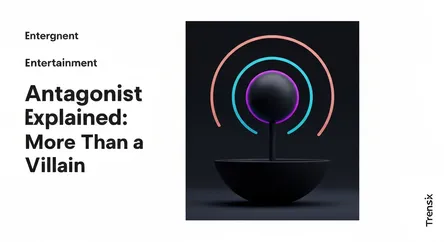Entertainment
Antagonist Explained: More Than a Villain

Discover the antagonist's role in storytelling. Learn how this character creates conflict and drives the narrative forward beyond simple villainy.
What is it?
An antagonist is a character, group, or institution that represents the opposition against which the protagonist must contend. While often a villain, an antagonist is not necessarily evil; their primary role is to create conflict and obstacles that challenge the main character, thereby driving the narrative. This opposition can manifest physically, ideologically, or emotionally. For example, in The Dark Knight, the Joker is a classic villainous antagonist, whereas the rival in a sports film is an antagonist focused on competition rather than malice.
Why is it trending?
Discussions around antagonists are trending as audiences and creators embrace more complex storytelling. The era of the one-dimensional "bad guy" is fading in favor of nuanced antagonists with understandable, sometimes even justifiable, motivations. Shows like Breaking Bad or films in the MCU showcase antagonists who are as compelling and well-developed as the heroes. This complexity fuels online fan theories, debates, and analyses, keeping these characters at the forefront of pop culture conversations.
How does it affect people?
A strong antagonist is crucial for emotional engagement. They raise the stakes, making the protagonist's struggles more impactful and their eventual success more rewarding. A well-written antagonist can challenge the audience's own moral compass, forcing them to see the world from a different perspective. This creates a richer, more memorable viewing experience that resonates long after the credits roll, proving that a story is often only as good as its opposition.